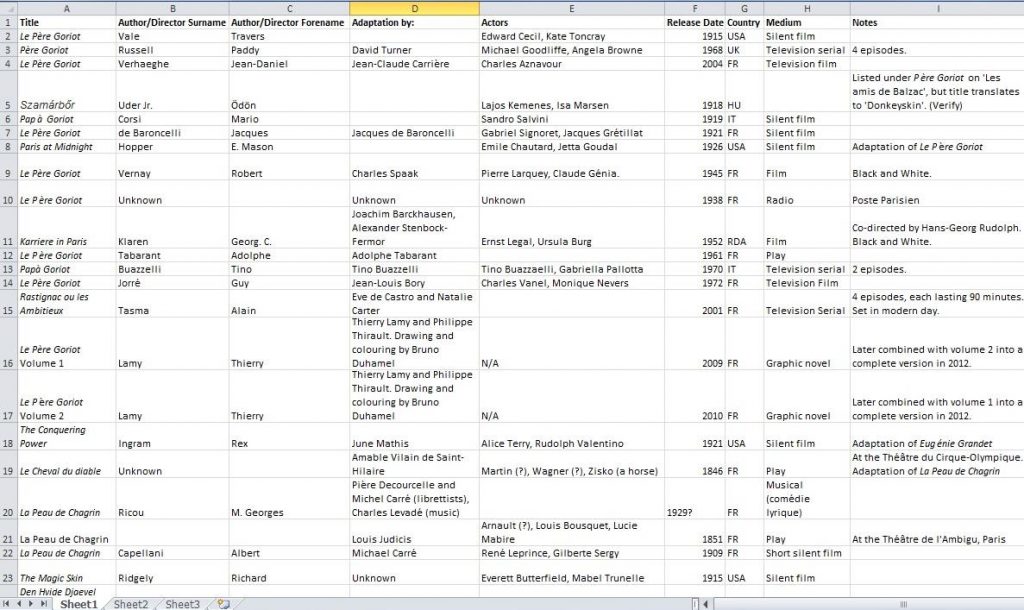Over the summer I have researched adaptations of the works of Honoré de Balzac for an upcoming research project by Dr Andrew Watts from the Department of Modern Languages. I chose to apply to this project because I believed that it would give me the opportunity to delve into some subject areas that I haven’t studied in great detail before – Balzac Studies, Adaptation Studies, and Film Studies. It also, being partly based in archival research and partly based on textual analysis, allowed me to improve on a variety of research skills.
My first task was to compile a searchable database of adaptations of Balzac’s works. At first, this seemed to be a pretty daunting task, but my project lead was able to provide enough guidance that the task quickly began to feel manageable. With a template from my project lead, I used the website of the Bibliothèque Nationale de France (and its online portal Gallica), alongside the website for the Société des Amis d’Honoré de Balzac et de la Maison de Balzac, to find data. The database isn’t exhaustive, but, as I wrote in my final project report, I hope that it is indicative of general adaptive trends. Stumbling across little-known adaptations that chose to translate Balzac’s novels into rarer media like operas, graphic novels, or children’s literature, was really rewarding. I wasn’t expecting to enjoy archive research as much as I did, but tracking down various data felt a bit like solving a puzzle.

My next task was to make a critical bibliography consisting of various critical writings about these adaptations. This was definitely the most challenging part of the project as it involved looking through old cinema periodicals to try and track down contemporary reviews.
During the project, I also watched and listened to various Balzac adaptations, to try and get a feel for the techniques that adapters use to translate Balzac’s works from one medium to another. One of the things that I found the most interesting in the visual adaptations, is how the directors attempted to use framing to replace the nuances of Balzac’s prose. Prose can give us insights into a character’s mental state by telling the reader something, through language. Films and television don’t communicate in the same way as the written word, and visual language must be used instead to communicate these nuances. Directors therefore have to rely on visual shorthands to convey a character’s mental state. For example, shaky camerawork might indicate that a character is panicking, or angry beyond rationality. Close-up, tight frames might indicate that a character feels trapped by their circumstances. Delving deeper into this visual language as part of my research was really rewarding.
For the radio adaptations, I decided to look at Andrew Crissell’s Understanding Radio so that I would be a bit more familiar with the conventions of radio drama. This ended up being quite helpful when it came to analysing Adrian Penketh’s The Wild Ass’s Skin Reloaded. I was lucky enough to get the opportunity to look at some of Penketh’s early drafts for the radio-play, and analyse how Penketh (re)adapted Balzac’s La Peau de Chagrin as the play developed.
I really enjoyed the research that I was able to do as part of the project. I even wish that I had had a little more time to answer some of the questions that had come up during the course of my research. I am now considering writing about adaptation for one of my extended essays in final year.
Rhys Morgan, BA Modern Languages and English
